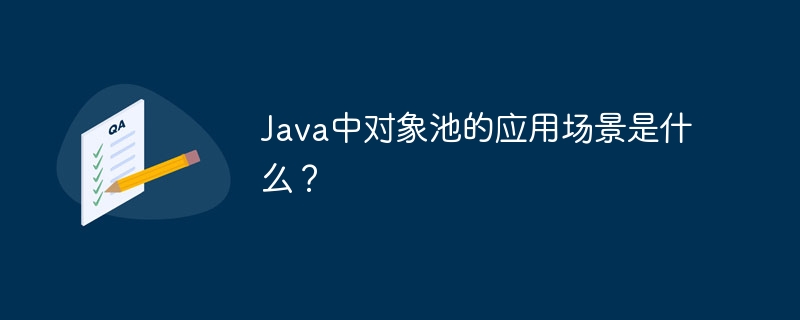
Application of object pool in Java: Improve connection pool performance, pre-allocate database connections to avoid creation and closing operation overhead. Reduce object creation costs and pre-create expensive objects (such as image objects). Avoid resource leaks by managing the allocation and release of objects to ensure that objects are destroyed after use.

Application scenarios of object pools in Java
Object pool is a design pattern that can pre-allocate and manage objects. to improve performance and reduce overhead. In Java, object pool can be applied to the following scenarios:
1. Improve the performance of connection pool
Connection pool is a typical application scenario of object pool. When database connections are heavily used, the creation and closing of each connection is a time-consuming operation. Using an object pool improves performance by pre-allocating database connections and acquiring and releasing connections from them as needed.
2. Object creation cost is high
When creating objects requires a lot of resources or overhead, you can use object pools. For example, in an image processing application, creating image objects may involve loading large files and performing complex operations. Using an object pool allows you to pre-create these objects and store them in the pool, thereby reducing the overhead of creating new objects.
3. Avoid resource leaks
When objects cannot be destroyed correctly, resource leaks may occur. Object pooling can help solve this problem. It manages the allocation and deallocation of objects to ensure that objects are always destroyed after use.
Practical Case
Consider the following Java code, which uses theObjectPoolclass in the Guava library to manage database connections:
import com.google.common.util.concurrent.ObjectPool; import com.google.common.util.concurrent.PooledObjectFactory; import java.sql.Connection; import java.sql.DriverManager; import java.sql.SQLException; class DbConnectionPoolFactory implements PooledObjectFactory{ @Override public Connection create() { try { return DriverManager.getConnection("jdbc:mysql://localhost:3306/testdb", "root", "password"); } catch (SQLException e) { throw new RuntimeException("Failed to create connection", e); } } @Override public void destroyObject(Connection conn) throws Exception { conn.close(); } @Override public boolean validateObject(Connection conn) { try { return !conn.isClosed(); } catch (SQLException e) { return false; } } } public class Main { public static void main(String[] args) { DbConnectionPoolFactory factory = new DbConnectionPoolFactory(); ObjectPool pool = new ObjectPool<>(factory, 10, 20); try { Connection conn = pool.borrowObject(); // 使用连接... pool.returnObject(conn); } catch (Exception e) { // 处理异常 } } }
In this example, theDbConnectionPoolFactoryclass acts as a factory for the object pool, which creates and destroys database connections.ObjectPoolClass manages the allocation and release of connections.
The above is the detailed content of What are the application scenarios of object pooling in Java?. For more information, please follow other related articles on the PHP Chinese website!




